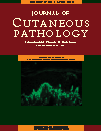Definition of the features of acquired elastotic hemangioma reporting the clinical and histopathological characteristics of 14 patients
Abstract
Background: During the last few years, new cutaneous vascular proliferations have been described, including a distinctive clinicopathologic variant of hemangioma, denominated acquired elastotic hemangioma. To date, there is only one series of six cases reported in the literature, thus, the clinical and morphological data of this variant are not well established.
Methods: Fourteen cases of acquired elastotic hemangioma were retrieved from the files of the Dermatopathology Unit at Wake Forest University School of Medicine.
Results: Acquired elastotic hemangioma affects sun-damaged skin of upper extremities and neck. Clinically, lesions present as slowly growing, painless, solitary, erythematous plaques. Histopathologically, they are characterized by a horizontal proliferation of capillary blood vessels in the upper reticular dermis in a background of solar elastosis. The vessels have plump endothelial cells that protrude into the vascular lumens in a ‘hobnail’ pattern. Of the 10 cases assessed by immunohistochemistry, 100% (10) expressed CD31 and CD34, 90% (9) expressed D2-40 and 10% (1) expressed SMA.
Conclusion: Acquired elastotic hemangioma is a distinctive variant of hemangioma which should be differentiated from other cutaneous vascular tumors with a hobnail endothelial pattern, including angiosarcoma. The expression of D2-40 in most cases suggests a lymphatic origin of this acquired vascular proliferation.
Martorell-Calatayud A, Balmer N, Sanmartín O, Díaz-Recuero JL, Sangueza OP. Definition of the features of acquired elastotic hemangioma reporting the clinical and histopathological characteristics of 14 patients.




